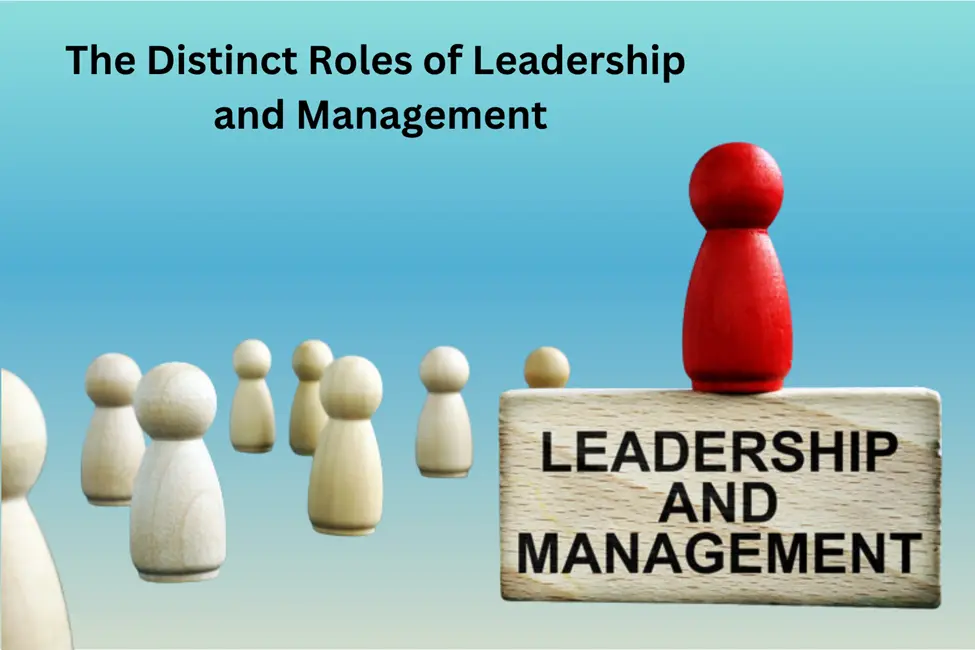The contemporary corporate world requires an understanding of the difference between Leadership vs Management. Every organisation needs leadership and management professionals as they serve different roles and purposes. To acquire the necessary skill sets, it is recommended to undergo various courses such as Leadership Training. This blog will examine the various management and leadership responsibilities and their unique contributions and mutual complements.
Table of Contents
Defining Leadership and Management
It is critical to define what we understand by management and leadership. Leadership is often described as the capacity to uplift and encourage others to accomplish a shared objective. Innovators, visionaries, and change agents are considered Leaders. They are focused on establishing direction and motivating others to follow.
On the other hand, management is the administration and guarantee of an organisation’s efficient running. Managers prioritise, coordinate, and plan resources to accomplish goals. Their responsibilities include stabilising, enhancing, and uniformising procedures.
The Key Differences Between Leadership and Management
Vision vs Execution
Visionaries make for leaders. People are inspired and engaged by the compelling future vision they develop and convey. Their primary responsibility is to provide directions and motivate others to follow it. People often perceive leaders as agents of change who question the current quo and promote creativity.
But execution is what worries managers most. They dissect the vision of the leader into doable strategies. The main concerns of managers are timelines, resource allocation, and ensuring jobs are finished successfully and efficiently. Being meticulous, they make sure that daily activities support strategic objectives.
Inspiring People vs Managing Processes
People make leaders. Leaders are talented at relationship-building, teamwork, and personal empowerment. They employ emotional intelligence to inspire and motivate their people because they recognise its value. An excellent corporate culture fostered by leaders makes staff members feel appreciated and involved.
Management, conversely, is about processes. Managers create and implement processes and procedures to guarantee that jobs are done well. Their main concerns include defining precise objectives, monitoring developments, and finding solutions. Managers also ensure that the group gets the tools and encouragement it needs to succeed.
Risk-Taking vs Risk Management
Risk-takers are frequently the leaders. They have no problem stepping into unknown areas and investigating fresh prospects. As they are aware that failure is occasionally a necessary step in the process, leaders promote creativity and innovation. They can live with the unknown and ambiguity.
Still, managers are more risk averse. Their job description includes finding such hazards and creating plans to reduce them. The managers are responsible for predictability and stability inside the company. They concentrate on data analysis, result projection, and well-informed risk-reduction decision-making.
Change vs Stability
Leaders are always seeking new and better approaches. Understanding that progress requires change, leaders are adept at helping their people through these changes. They make people feel compelled to change and embrace it.
On the other hand, managers are proponents of stability. They guarantee the smooth operation of the company’s systems and procedures. Operations consistency and dependability are the primary concerns of managers. They try to make the workplace conducive to productive, interruption-free work for staff members.
The Interplay Between Leadership and Management
Management and leadership are interrelated and complement one another. Successful businesses require competent managers as well as strong leaders. Managers create and carry out plans to realise the vision, leaders establish it and motivate the team. This interaction guarantees the company’s creativity and effectiveness.
Developing Leadership and Management Skills
It takes time to hone both management and leadership abilities. Here are some techniques for honing these vital abilities:
For Leadership:
- Develop Your Vision: Get comfortable expressing a compelling and unambiguous vision. This is effectively explaining the larger picture to others and grasping it yourself.
- Emotional Intelligence: Enhancing your self-awareness, empathy, and interpersonal abilities will help you increase your emotional intelligence. This will inspire people and develop solid relationships.
- Staking Out Risks: Develop an outlook that welcomes uncertainty and risk. Be open to new chances and support your team’s inventiveness and originality.
For Management:
- Planning and Organisation: Develop your capacity for resource planning, organisation, and coordination. This includes defining precise objectives, creating thorough plans, and ensuring that everything is finished on schedule.
- Process Improvement: Concentrate on creating and honing systems and procedures. Seek methods to increase team effectiveness and efficiency.
- Risk Management: Develop strategies for identifying and mitigating risks. This entails data analysis, outcome projection, and well-informed decision-making to lower possible risks.
Conclusion
The success of an organisation depends on knowing the different responsibilities of management and leadership. Though their duties and focuses differ, managers and leaders play complementary and interdependent roles. Good companies need effective managers to carry out plans and preserve stability and influential leaders to motivate and promote change.

